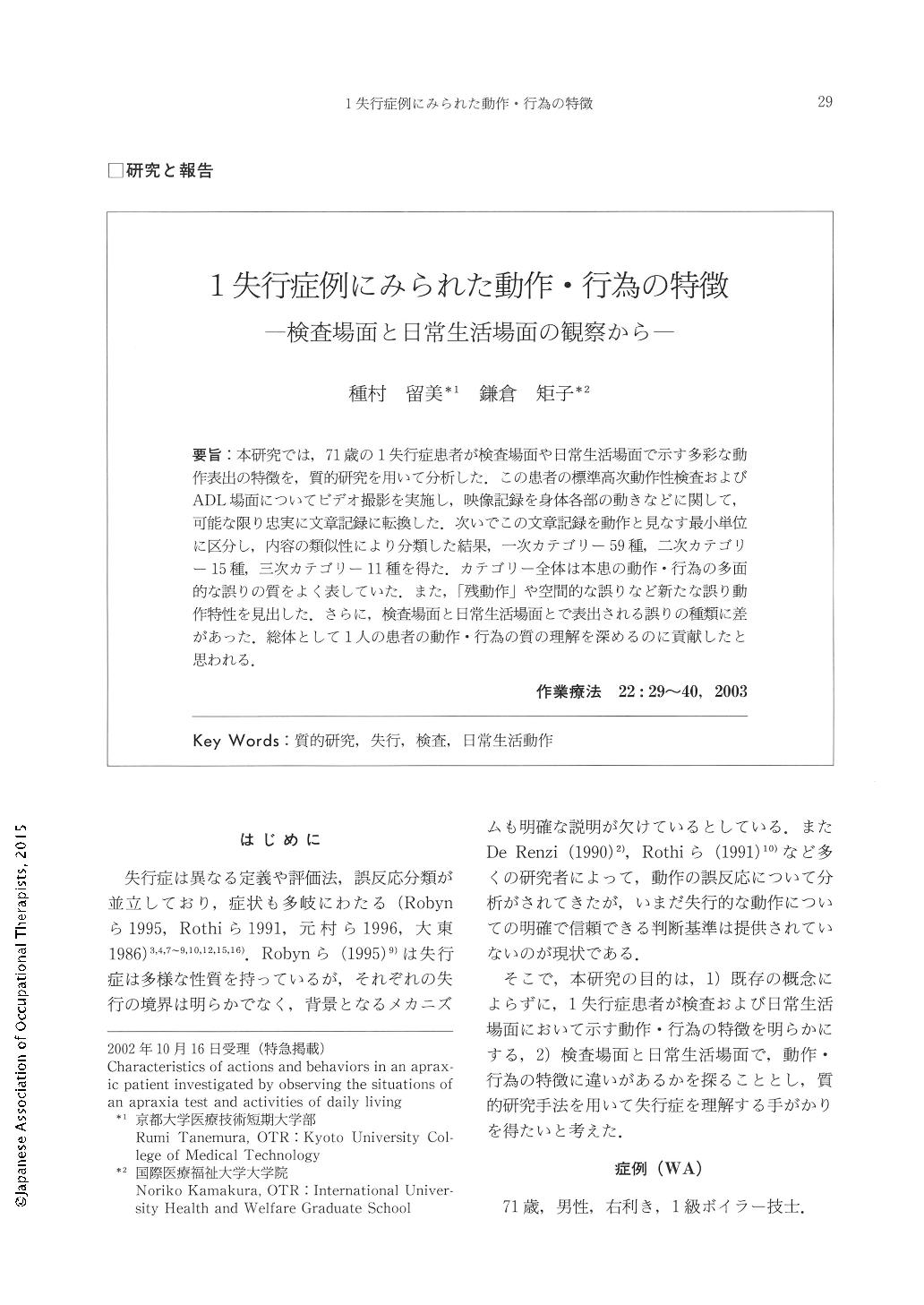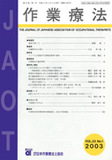Japanese
English
- 販売していません
- Abstract 文献概要
- 1ページ目 Look Inside
- 参考文献 Reference
- サイト内被引用 Cited by
要旨:本研究では,71歳の1失行症患者が検査場面や日常生活場面で示す多彩な動作表出の特徴を,質的研究を用いて分析した.この患者の標準高次動作性検査およびADL場面についてビデオ撮影を実施し,映像記録を身体各部の動きなどに関して,可能な限り忠実に文章記録に転換した.次いでこの文章記録を動作と見なす最小単位に区分し,内容の類似性により分類した結果,一次カテゴリー59種,二次カテゴリー15種,三次カテゴリー11種を得た.カテゴリー全体は本患の動作・行為の多面的な誤りの質をよく表していた.また,「残動作」や空間的な誤りなど新たな誤り動作特性を見出した.さらに,検査場面と日常生活場面とで表出される誤りの種類に差があった.総体として1人の患者の動作・行為の質の理解を深めるのに貢献したと思われる.
There are many classifications with regard to error responses in apraxic patients, but we do not have valid and reliable clinical criteria. We analyzed the characteristics of various activities and behavioral responses from apraxia tests and from activities in daily living (ADL). During the analysis, we used qualitative research methods, and we did not depend on existing error classification systems. The subject was a 71-year-old man, and 2 years and 4 months passed from the onset of his cerebral infarction in the left hemisphere. His behavioral responses during apraxia tests appeared in ADL and were recorded on videotapes. The length of the pictorial record was 6 hours—recording the movements of every piece of the body, expressions, and utterances—and was transcribed to written descriptions as faithfully as possible. The written record was divided into minimal units that we could judge as behavior. We classified these units of behavior according to their similarity, and 59 primary categories, 15 secondary categories and 11 cubic categories were extracted. The whole behavior categorization reflects the multiphasic error qualities of his behavior, which led us to the discovery of new error categories that were not described in the literatures, such as various spatial errors containing "remained action." Furthermore, it was found that there were differences in error categories produced in apraxia tests and ADL. It was thought that these analyses of apraxic behavior gave unique contributions to the understanding of overall behavior quality.

Copyright © 2003, Japanese Association of Occupational Therapists. All rights reserved.


